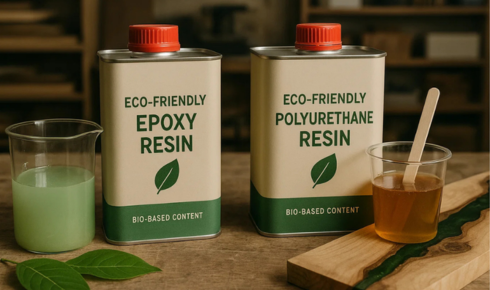The world of unmanned aerial vehicles (UAVs) is rapidly evolving, and the materials used in their construction play a critical role in their performance, durability, and safety. One of the most crucial components in UAV manufacturing is adhesives. Selecting the right adhesive ensures that UAVs maintain structural integrity while keeping weight to a minimum, which is essential for optimal flight performance. Among the most widely used adhesives for UAVs are epoxy resin and urethane-based formulations, along with resin equivalents and composite resins.
Epoxy Resin: Strength and Durability
Epoxy resin is the go-to adhesive in UAV construction for its exceptional strength and bonding capabilities. Its ability to adhere to a variety of materials, including metals, composites, and plastics, makes it highly versatile. In UAV applications, epoxy resin is often used in bonding structural components such as fuselage sections, wings, and control surfaces.
The chemical structure of epoxy resins allows them to cure into a hard, durable material that resists environmental stresses like moisture, UV radiation, and temperature fluctuations. This makes UAVs equipped with epoxy resin adhesives more reliable for extended flight missions. Additionally, epoxy resin’s low shrinkage during curing ensures that bonded parts maintain their alignment, which is critical for the aerodynamics and stability of UAVs.
Urethane Resin: Flexibility and Shock Absorption
While epoxy resin excels in strength, urethane resin is preferred for applications where flexibility and impact resistance are essential. Urethane adhesives can absorb vibrations and shocks, making them ideal for UAVs that encounter rough terrain or turbulent flight conditions. They are often used for attaching electronic components, sensor mounts, and landing gear assemblies.
The flexibility of urethane resin also helps in preventing crack propagation in composite structures. UAV manufacturers often combine urethane resin with other adhesives to achieve a balance between rigidity and flexibility, ensuring that the vehicle can withstand both mechanical and environmental stress.
Resin Equivalents: Cost-Effective Alternatives
For UAV developers looking for budget-friendly solutions without compromising performance, resin equivalents are an attractive option. Resin equivalents mimic the chemical and physical properties of traditional adhesives like epoxy and urethane but often come at a lower cost or with faster curing times. These adhesives are particularly popular in prototyping and small-scale UAV production, where cost efficiency and rapid assembly are priorities.
Resin equivalents can also be customized to achieve specific characteristics, such as enhanced adhesion to carbon fiber composites or improved thermal resistance, offering manufacturers flexibility in material selection.
Composite Resins: Advanced Bonding for High-Performance UAVs
Composite resins are another category of adhesives gaining traction in the UAV industry. These resins are formulated to bond composite materials such as carbon fiber, fiberglass, and aramid fibers, which are increasingly used in high-performance UAVs. Composite resins offer excellent mechanical strength while keeping the overall weight low—a critical factor for UAV efficiency and flight time.
Moreover, composite resins can be tailored to resist harsh operational conditions, including high-speed airflow, vibration, and chemical exposure. This makes them indispensable for military and commercial UAVs that require long service life and reliability under demanding conditions.
Conclusion
The choice of adhesive in UAV construction is far from trivial. Epoxy resin and urethane resin remain cornerstone materials, providing strength and flexibility, respectively. Resin equivalents offer cost-effective alternatives without compromising essential properties, while composite resins ensure strong, lightweight bonding for advanced UAV structures.
By carefully selecting the right adhesive for each component, UAV manufacturers can enhance flight performance, durability, and safety. As UAV technology continues to advance, the role of high-performance adhesives will remain a cornerstone in developing reliable, efficient, and high-performing unmanned aerial systems.

